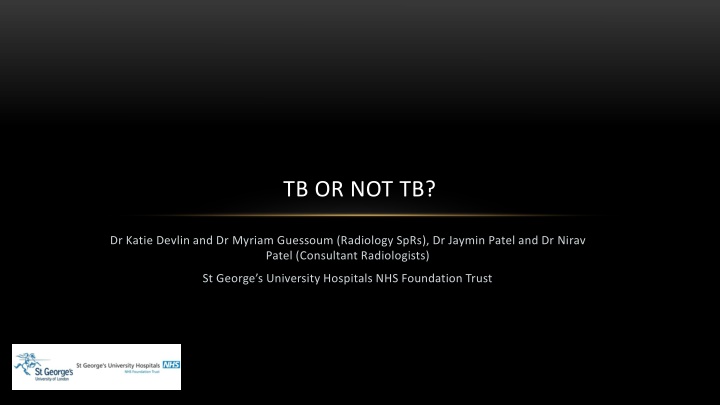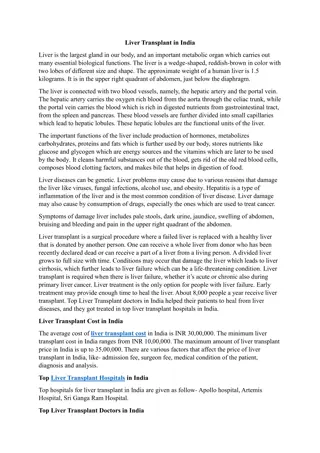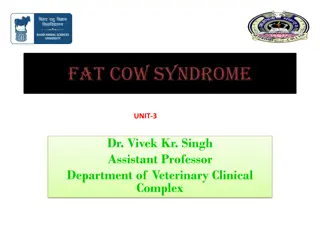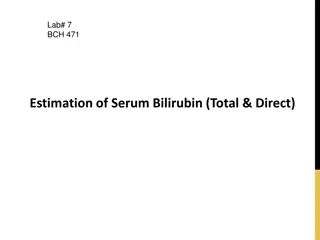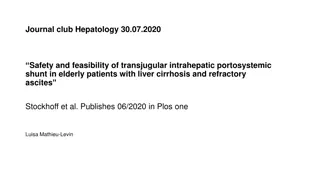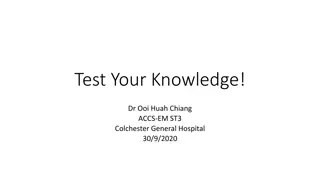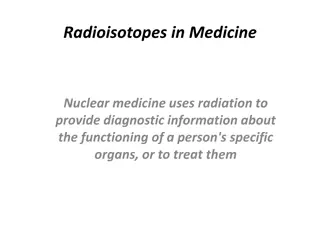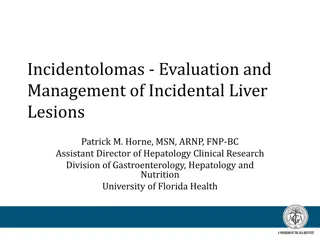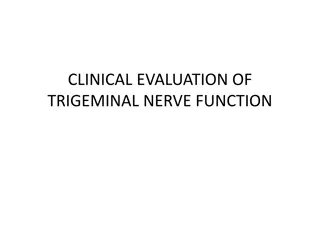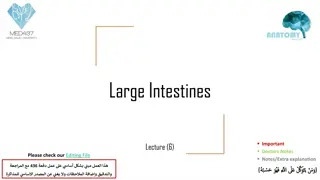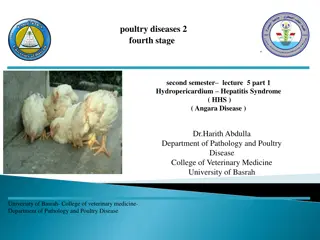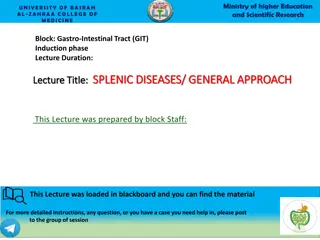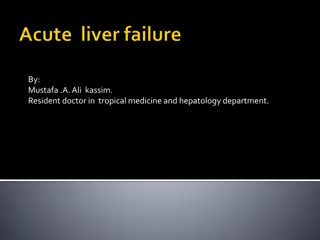Diagnostic Journey of a Male Patient with Splenic and Hepatic Lesions
A 54-year-old male from Somalia presented initially in 2011 with weight loss and deranged liver function tests. Imaging revealed splenomegaly, liver lesions, and lymphadenopathy. Further investigations led to a diagnosis of presumed disseminated TB, managed with quadruple therapy. However, in 2018, he re-presented with ongoing abdominal pain, prompting additional investigations to explore alternative diagnoses.
Download Presentation

Please find below an Image/Link to download the presentation.
The content on the website is provided AS IS for your information and personal use only. It may not be sold, licensed, or shared on other websites without obtaining consent from the author.If you encounter any issues during the download, it is possible that the publisher has removed the file from their server.
You are allowed to download the files provided on this website for personal or commercial use, subject to the condition that they are used lawfully. All files are the property of their respective owners.
The content on the website is provided AS IS for your information and personal use only. It may not be sold, licensed, or shared on other websites without obtaining consent from the author.
E N D
Presentation Transcript
TB OR NOT TB? Dr Katie Devlin and Dr Myriam Guessoum (Radiology SpRs), Dr Jaymin Patel and Dr Nirav Patel (Consultant Radiologists) St George s University Hospitals NHS Foundation Trust
CLINICAL INFORMATION 54 y/o male originally from Somalia Presented initially in 2011 with significant weight loss Background of PUD & cholecystectomy 1 year prior (gallstones) Incidentally found to have deranged LFTs on admission US abdomen demonstrates splenomegaly, multiple hypoechoic splenic and liver lesions and periportal lymphadenopathy
FIGURES - CT HEAD, THORAX ABDOMEN AND PELVIS (i) (iii) (ii) (iv) (i) Axial image, arterial-enhanced CT thorax: Enlarged pre- and paratracheal nodes, measuring up to 18mm in short axis. Small calcified left hilar node. Lungs unremarkable. (ii, iii and iv) Axial images, portal-venous CT abdomen and pelvis: Multiple hypodense hepatic and splenic lesions with splenomegaly and bulky pre- caval, gastrohepatic and portocaval nodes; (iii) Soft tissue mass closely related to the rectosigmoid colon and (iv) Lytic lesion within the right sacral ala.
WORKING DIFFERENTIALS Differentials following an US and CT Haematological malignancy e.g. lymphoma Metastatic malignancy TB Biopsy diagnosis: Good cellular aspirate contents from spleen and liver revealing caseating granulomatous splenitis and hepatitis. No malignant cells seen. The features are those of mycobacterial infection. Conclusion FNA spleen and liver: Caseating granulomatous inflammation indicating mycobacterial infection AAFB blood culture and AFB induced sputum negative Lytic bone lesion underwent MR and Bone scintigraphy investigation, features felt consistent with cold abscess from TB.
2011 2012 FINAL DIAGNOSIS - PART 1 Working diagnosis as per Clinical follow up documentation: Presumed disseminated TB. Managed with quadruple therapy. 6 month follow-up CT TAP performed demonstrated reduction in all sites of disease in keeping with a response to antituberculous therapy
CLINICAL RE-PRESENTATION Re-presented in 2018 with grumbling ongoing right-sided abdominal pain Several interim investigations were performed including US abdomen and pelvis (x4) Persistent splenic lesions led to an MRI liver and spleen, splenic lesions reported as indeterminate but with no sinister features. With no underlying cause found for symptoms and treated for presumed TB, the diagnosis was in question ? Sarcoid ?lymphoma ?IgG4 A PET-CT was performed in July 2018
PET-CT, MR AND TRUS IMAGING (i) (ii) (iii) (i) (ii) MR axial T2: Large lobulated mass with predominantly intermediate signal with central areas of low and high T2 signal, separate to the rectum, bladder and seminal vesicles. ?large lymph node mass likely secondary to TB (iii) Transrectal US-guided biopsy of the mass. PET-CT: 49 x 85 x 56mm PET avid (SUVmax 13.2) retrovesical pouch mass. ?peritoneal TB given the clinical context
2011 FINAL DIAGNOSIS: TB OR NOT TB? Pelvic mass biopsy: In keeping with germ cell tumour, likely seminoma Classical seminoma in an undescended testis Underwent robotic assisted excision of ectopic testis and two enlarged right external iliac nodes and completed adjuvant carboplatin February 2019. Pathological staging pT1N0 Follow-up October 2019, patient well with symptoms of abdominal pain resolved, up-to-date imaging and tumour markers normal.
DISCUSSION & LEARNING POINTS Tricky case owing to the distracting history of presumed TB alongside the clinical and radiological improvement following antibiotic treatment, particularly with reduction in the size of the pelvic mass It was felt with hindsight that this tumour was present and reflective of the pelvic mass on the CT of 2011 The diagnosis of hepatic and splenic TB remains presumed, but nil grew in blood cultures or sputum. Not typical sites for metastatic spread. The findings of a large pelvic mass within the pelvis with no additional peritoneal abnormality are not typical features of TB peritonitis (including features of wet, dry-type or fibrotic-fixed type) which should raise the question about an alternate diagnosis In any male pelvic mass and in general, it is important to review the spermatic cord and testes as often only part- imaged on the last few axial slices of a CT abdomen and pelvis!
